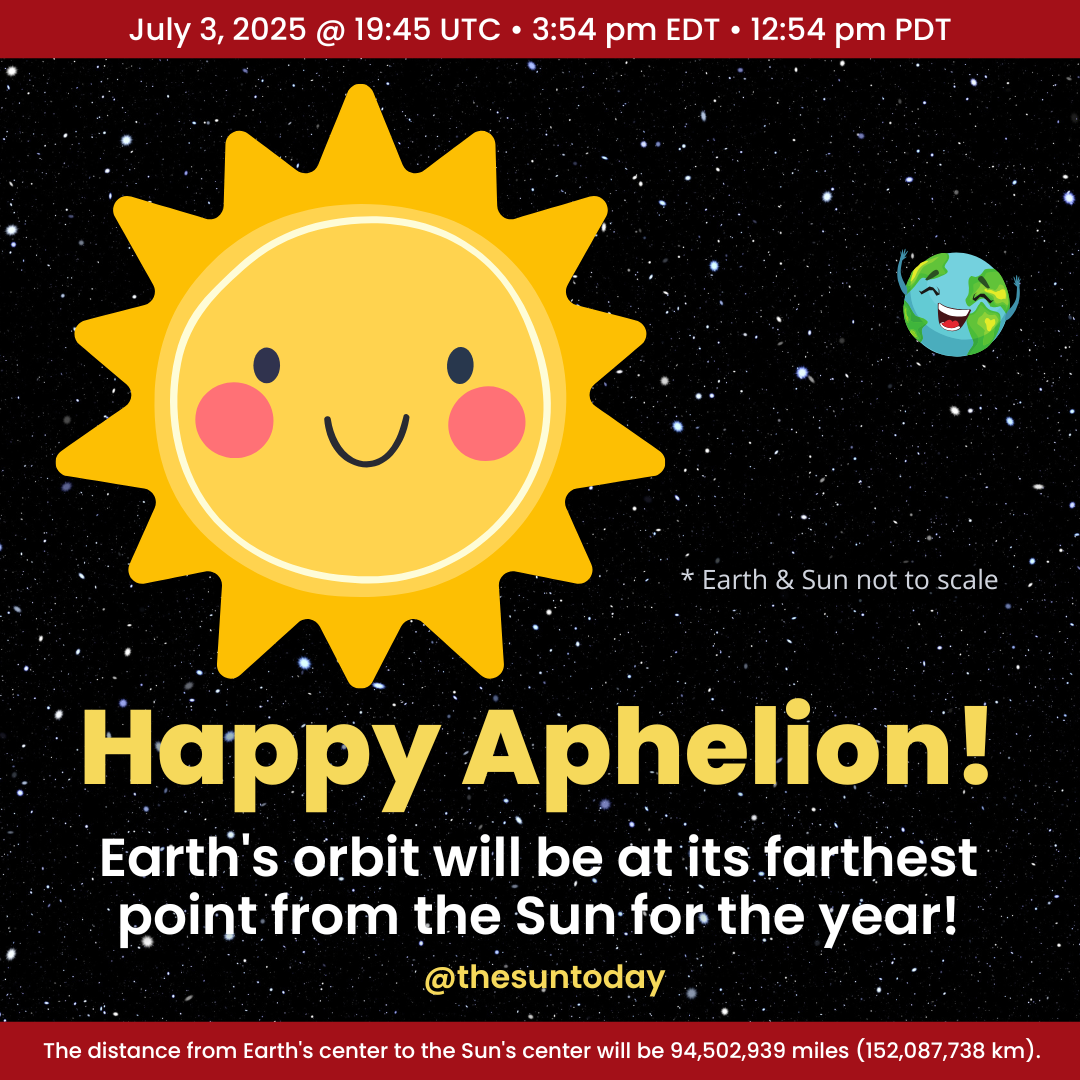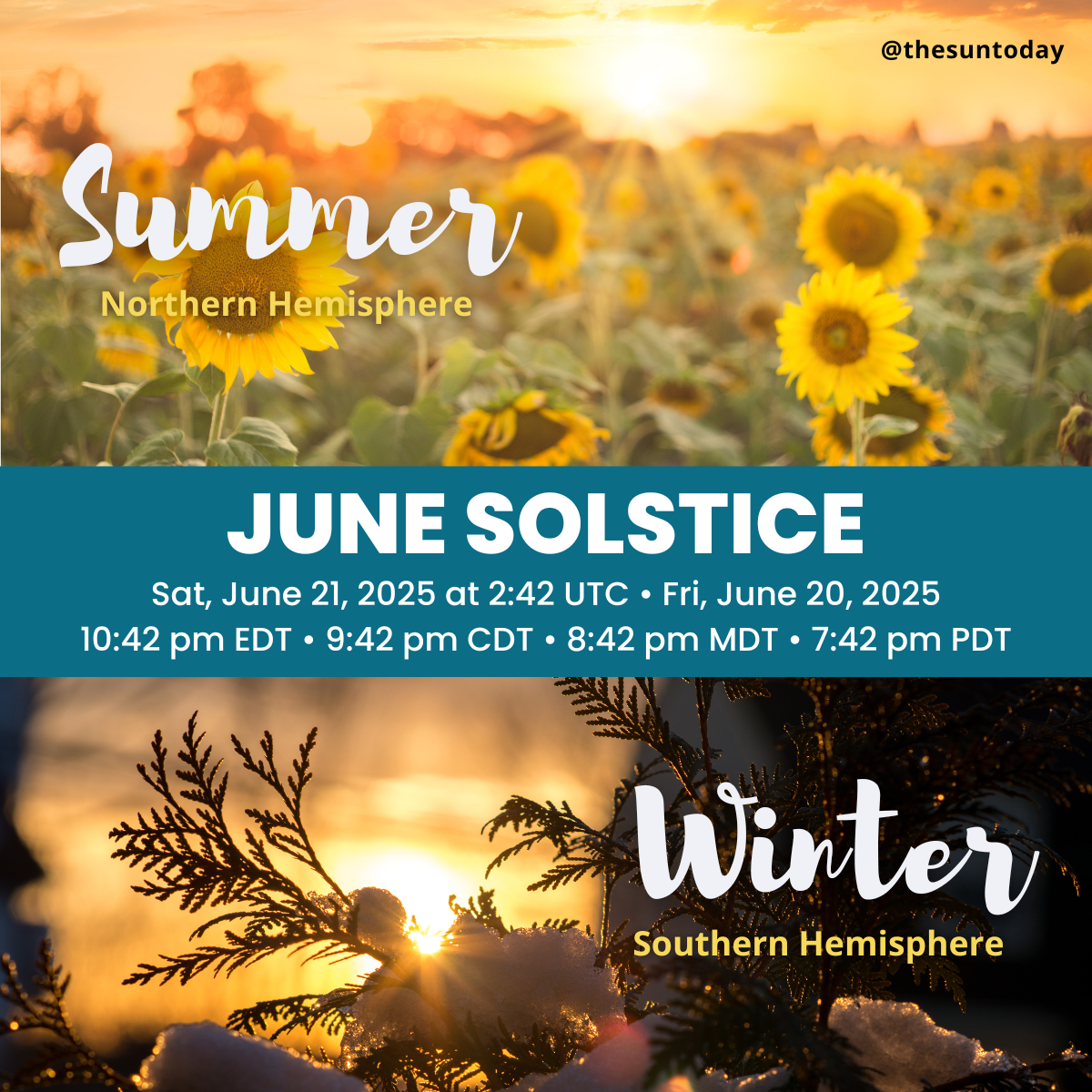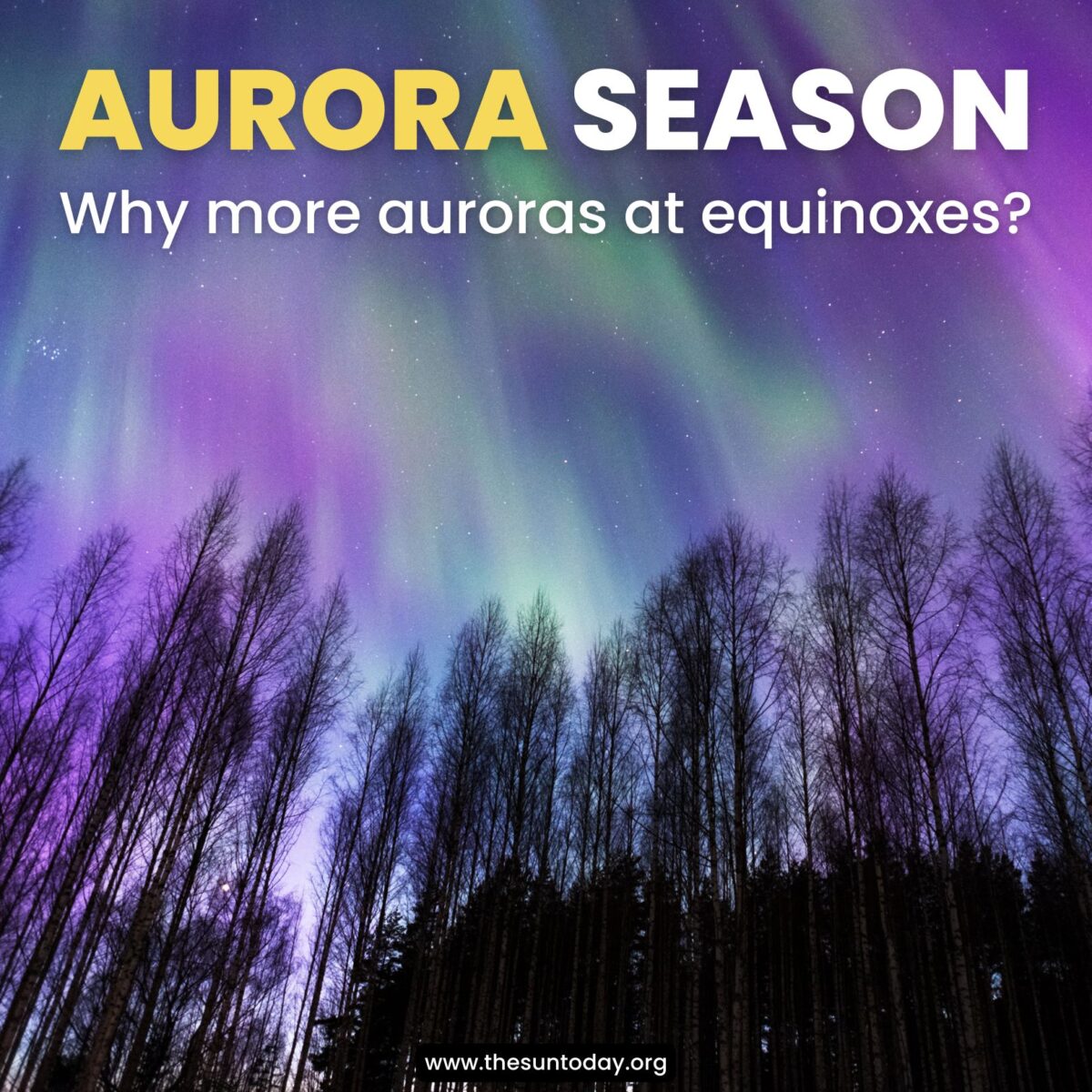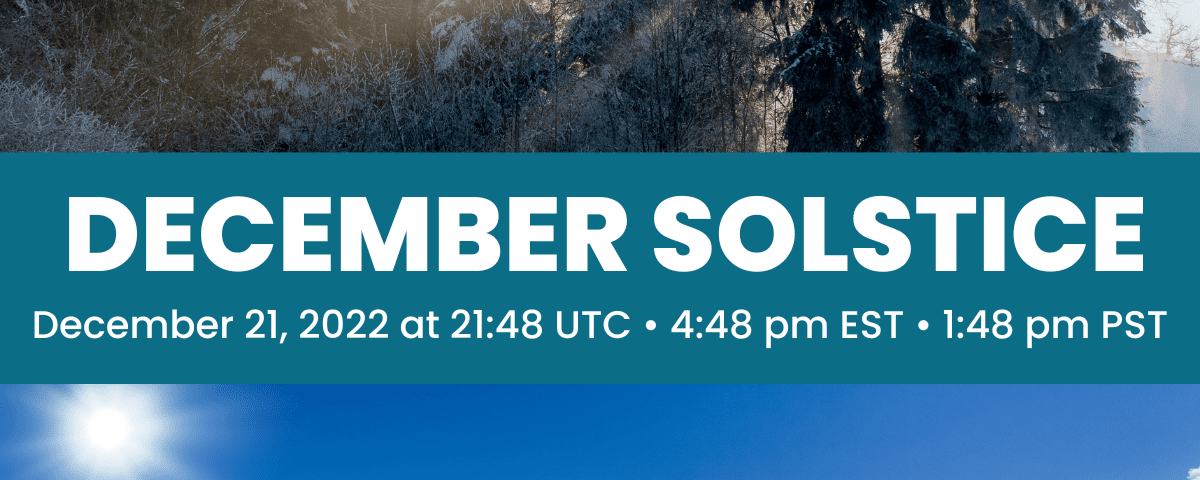
Happy December Solstice 2022! Time for a change on December 21st!
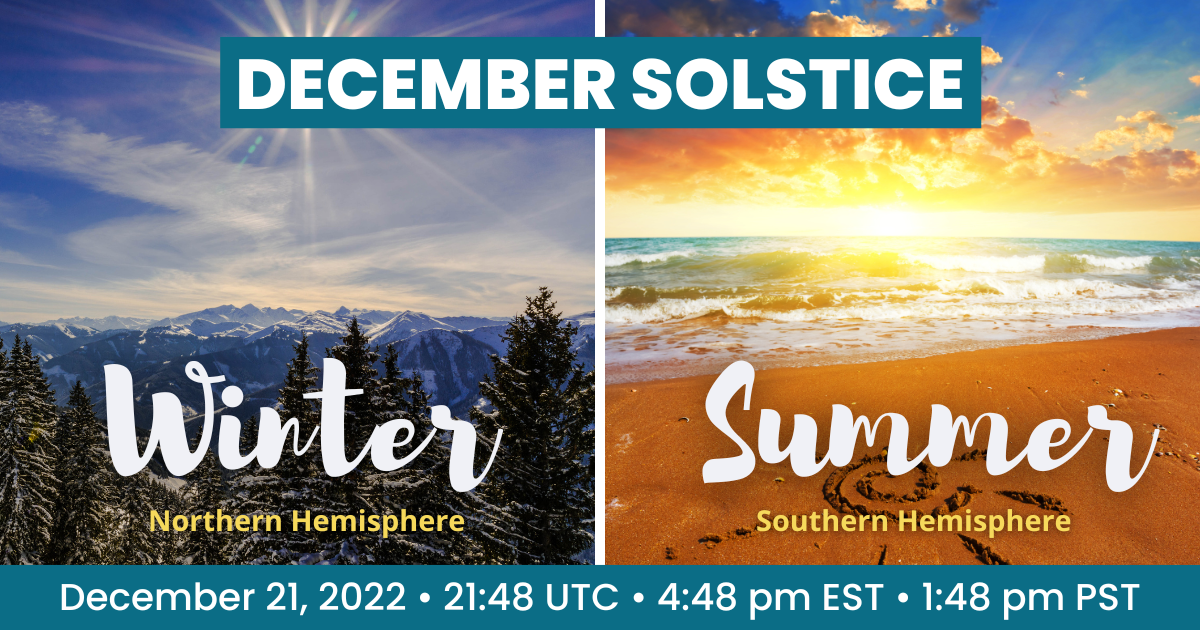
Convert Your Timezone
A new season is upon us! Depending upon where you live:
 OR
OR 
The December solstice is the beginning of winter for the northern hemisphere and summer for the southern hemisphere. It occurs between December 20th and 23rd every year.
For 2022 it occurs on Wednesday, December 21st at 21:48 UTC
4:48 pm EST • 3:48 pm CST • 2:48 pm MST • 1:48 pm PST
Convert Your Timezone
Watch the first Winter sunrise at Stonehenge
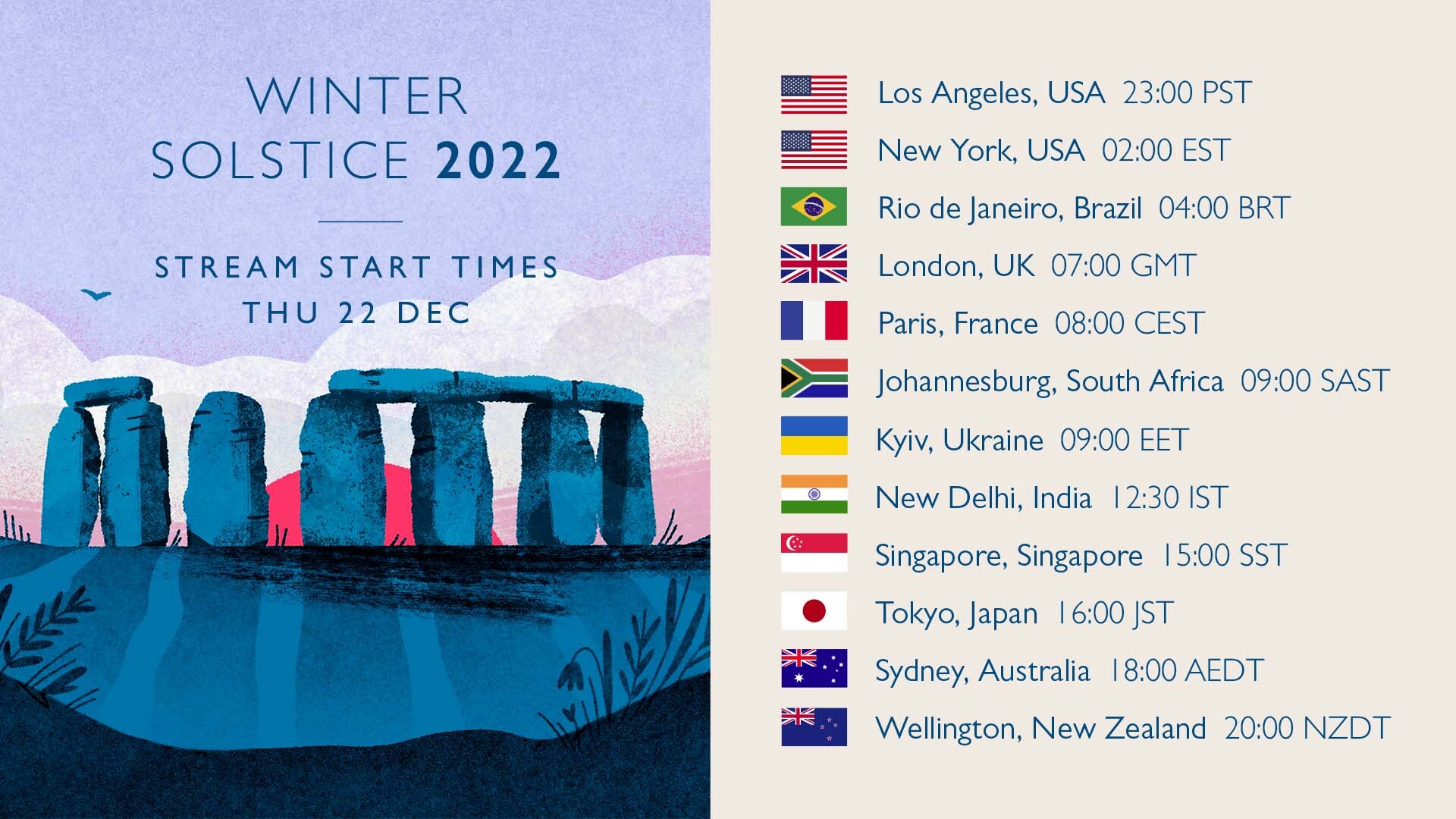
For some solstice excitement, or at least a little connection to how some ancient people focused on the sun by watching this special sunrise, turn into the live feed from Stonehenge. It’s the first sunrise at Stonehenge after the Winter solstice.
- The coverage starts on Thursday, December 22, 2022 local time at Stonehenge – the morning after the solstice!
- You can convert from UTC to your local time by simply Googling it (e.g. “8 UTC in EST”) or try an online tool.
What are solstices?
There are two solstices in a year, the June solstice (between June 20-22) and the December solstice (between December 20-23).
On the June solstice, the Sun reaches its highest point in the sky for an observer at the North Pole. On the December solstice, the Sun reaches its highest point in the sky for an observer at the South Pole. Solstices also mark the change from fall to winter or spring to summer.
The solstices happen because of the tilt of Earth’s axis of rotation with respect to its orbital path around the Sun. The axis of rotation is an imaginary line drawn straight through Earth connecting the North Pole to the South Pole. This line is tilted 23.5° from Earth’s orbital path around the Sun. This means that the Sun’s light does not hit the Earth evenly at a particular latitude above and below the equator. This tilt is the cause of Earth’s seasons.
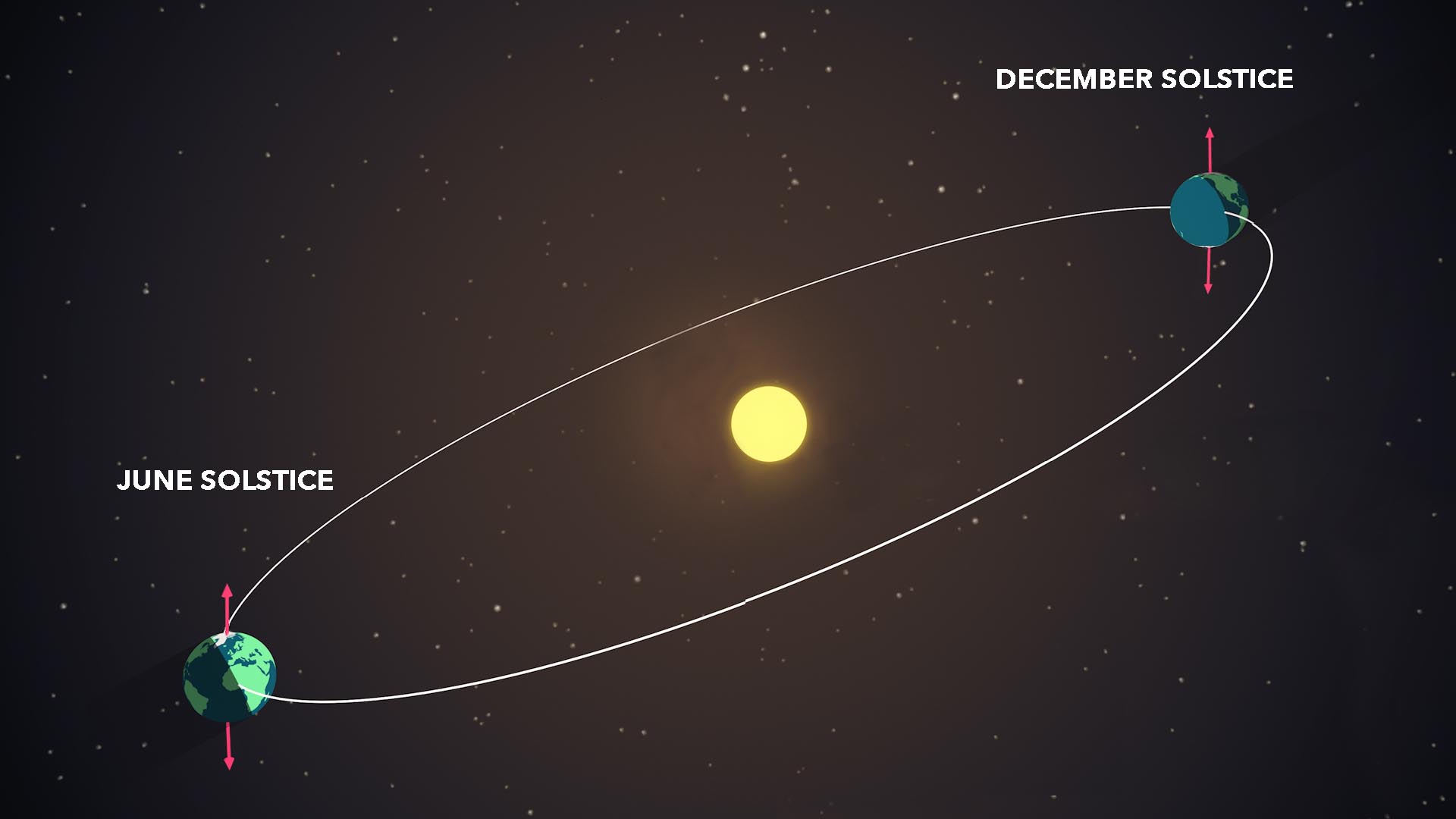
During the solstices, Earth reaches a point where its tilt is at the greatest angle to the plane of its orbit, causing one hemisphere to receive more daylight than the other. (NASA/Genna Duberstein)
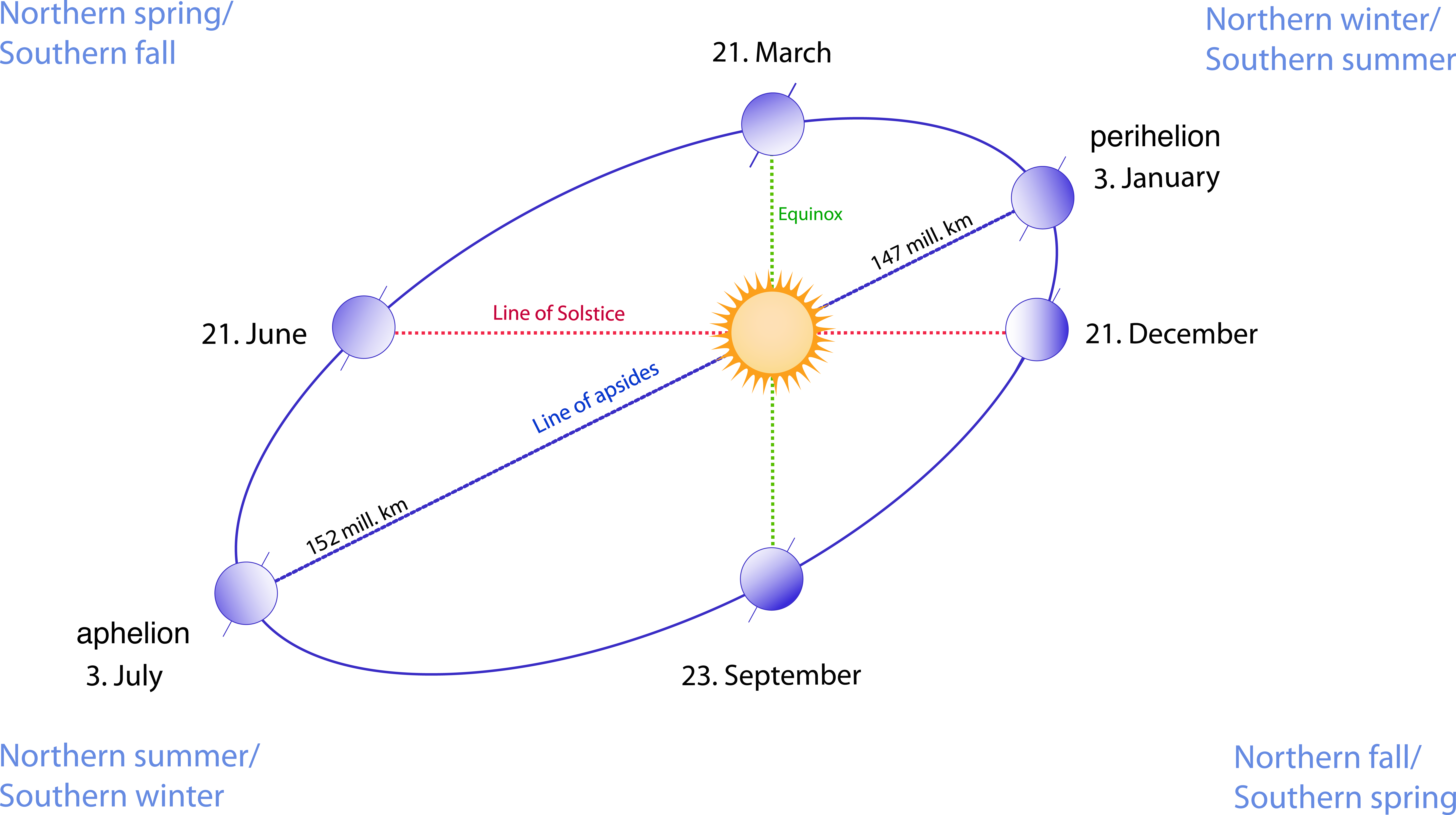
This diagram shows the relation between the line of solstice and the line of apsides of Earth’s elliptical orbit. The orbital ellipse (with eccentricity exaggerated for effect) goes through each of the six Earth images, which are sequentially the perihelion (periapsis—nearest point to the Sun) on anywhere from 2 January to 5 January, the point of March equinox on 20 or 21 March, the point of June solstice on 20 or 21 June, the aphelion (apoapsis—the farthest point from the Sun) on anywhere from 4 July to 7 July, the September equinox on 22 or 23 September, and the December solstice on 21 or 22 December. CREDIT
This means that the Sun’s light does not hit the Earth evenly at a particular latitude above and below the equator. This tilt is the cause of Earth’s seasons.
The equator is an imaginary line drawn right around Earth’s middle, like a belt. It divides Earth into the Northern and the Southern Hemispheres.
The imaginary lines around Earth that are parallel to the Equator are called lines of latitude. They are numbered from 0° to 90°. The one at 0° is the equator itself. The higher the number, the farther north (if it’s a + number) or south (if it’s a − number).
Because of Earth’s tilt is 23.5° the latitudes of +23.5° and −23.5° are special and have special names. The one in the Northern Hemisphere, +23.5° latitude, is called the Tropic of Cancer. The one in the Southern Hemisphere, − 23.5° latitude, is called the Tropic of Capricorn.
These are the latitudes where the Sun is directly overhead at noon once a year. In the Northern hemisphere, on the Tropic of Cancer, that is the June Solstice. In the Southern Hemisphere, on the Tropic of Capricorn, that is the December Solstice. These solstice days are the days with the most (for Summer) or fewest (for Winter) hours of sunlight during the whole year.
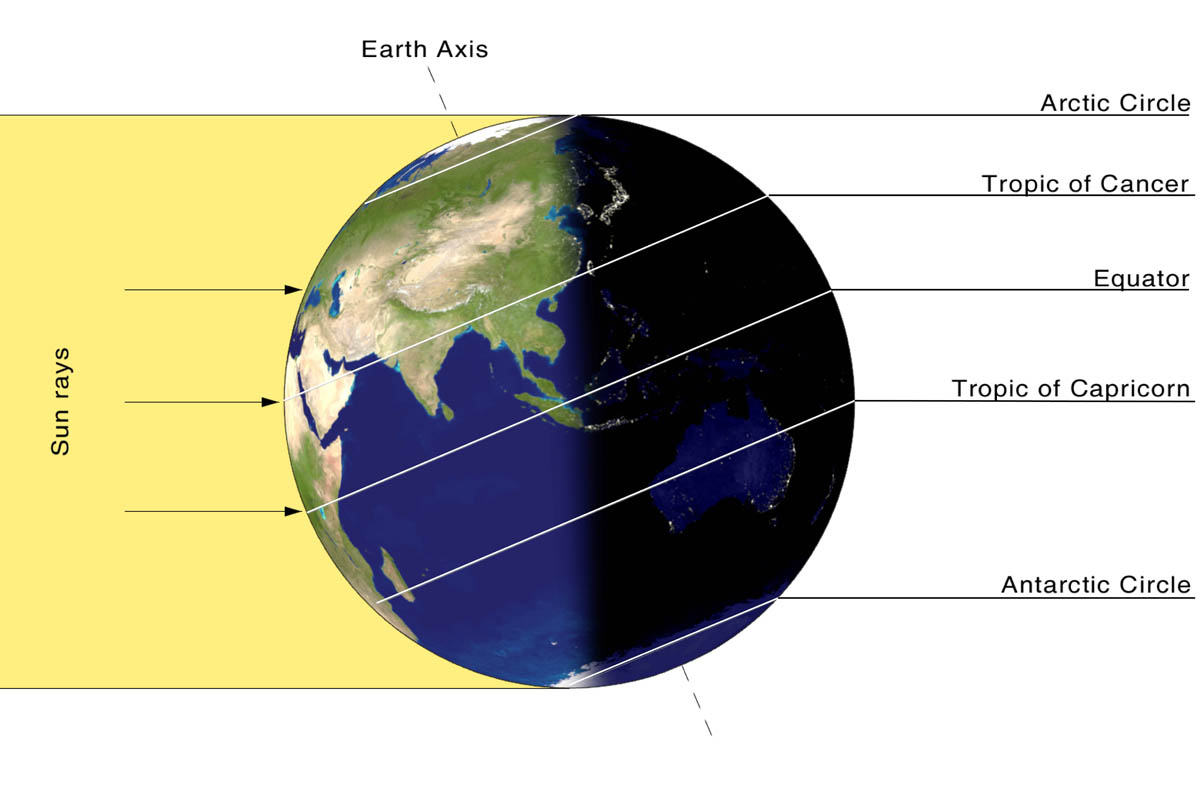
For the northern hemisphere, the Sun is directly overhead at “high-noon” on Summer Solstice at the latitude called the Tropic of Cancer.
Science communicator Dr. James O’Donoghue creates amazing visuals. He created two visuals to illustrate the reasons for the seasons, solstices, and equinoxes.
CREDIT: Dr. James O’Donoghue
CREDIT: NASA images & animation by Robert Simmon, using data ©2010 EUMETSAT. Caption by Mike Carlowicz. Read more »
An analemma video created using images taken every 10 days at the same time from June 21, 2018 to June 7, 2019 (Updated version). Video by Marcella Giulia Pace and shared at Astronomy Picture of the Day


